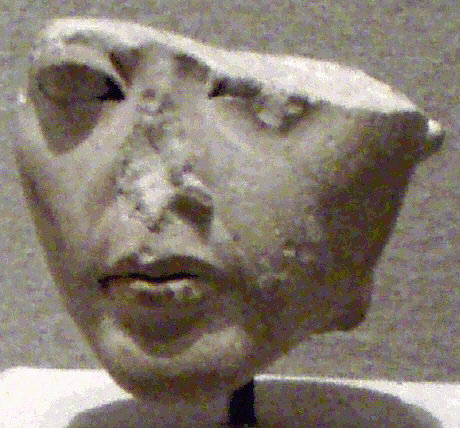1322 Ankhesenamun married Moses, who took Kirjath Sepher from Esau.
© Charles ChandlerArmarna era statue in the Brooklyn Museum, thought to represent Ankhesenamun, sister and wife to Tutankhamun.© 2007 Keith Schengili-RobertsThen, in , Tutankhamun died, and his wife Ankhesenamun disappeared shortly thereafter. By this time in Judges, Otni'El was taking Kirjath Sepher, for which he was given Aksah's hand in marriage. Perhaps Aksah was Ankhesenamun, who had decided that she wasn't interested in Ay (or vice versa), and who opted to fall in with Moses instead, thereafter being known by her nickname. If so, the mention of "upper and lower springs" would have been references to the Upper and Lower Nile,1 inserted to identify her as a former queen of Egypt. Perhaps this was the Cushite marriage that Aaron & Miriam criticized,2 not the marriage to Zipporah, who was a Midianite (or a Mitannian — see the article on Jethro, Balaam, & Job), nor to Merit-Ptah, who seems to have been from Memphis.3:42 A chunk of Jewish lore first published in (i.e., before Egyptian hieroglyphics were deciphered, and before Amarna was unearthed) agreed that Moses' Cushite wife was a former queen, who married Moses after the king died,4:ch73:31 consistent with Ankhesenamun going with Moses after Tutankhamun died. It went on to give her name — Adoniya — which was an Atenist name, suggesting that she had been a queen at Amarna. If we're looking for an Amarna queen, of Ethiopian descent, whose pharaoh (also of Ethiopian descent) died after , Ankhesenamun is the only candidate. We can then set the date of the marriage of Otni'El & Aksah at , a year or so after Tut died, and identify them with Ra'Moses-Hermes & Ankhesenamun.
References
1. Judges 1:15 (DH) ⇧
2. Numbers 12:1 (E) ⇧
3. Hodel-Hoenes, S. (2000): Life and Death in Ancient Egypt: Scenes from Private Tombs in New Kingdom Thebes. Cornell University Press ⇧
4. Samuel, M. (ed.) (1552): Sefer haYashar. ⇧











